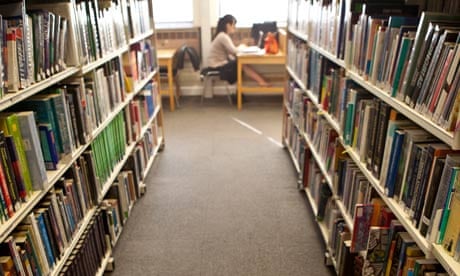A few years ago, if a student got their phone out in a lecture, this was quite a clear sign that they were no longer paying attention. But today, using a phone or tablet in the lecture hall is actually encouraged by universities, many of which are asking students to use their own technology to access learning resources.
The trend, known as Bring Your Own Device (BYOD), has swept across countless institutions, including University College London, where a dedicated IT service desk will connect any device to the university's wireless network, Eduroam.
The idea is that technology can allow students to access online learning tools and interactive resources: students will no longer sit passively in the lecture hall, but instead be engaging with complementary material online. While supplying (and routinely upgrading) enough technology so that all students can access virtual learning environments is too costly, building a network that allows them to use online resources via their personal devices is less of a financial burden.
The practice also allows students to use technology that they're familiar with, according to Jason Lodge, lecturer in higher education in learning futures at Griffith University in Brisbane. "BYOD eliminates quite a bit of the cognitive load associated with learning. For example, any activity requires multiple levels of understanding in order for students to engage effectively… By using devices they are already familiar with, they have more resources available to understand what they are being asked to do and what the actual content of the task is."
But Lodge admits that the BYOD trend does have a number of flaws. His biggest concern? It encourages students to use technology during teaching time: "The major downside of BYOD is the potential for distraction. Students' own devices are likely to include all the applications they use on a regular basis. This cannot be controlled like it can be with computers provided by the institution."
Tim Cappelli, a senior project manager at Manchester Medical School, disagrees. He explained: "93% of our students said they use their iPads for accessing social networks. I'm surprised it's not higher. Are they doing this in lectures? Probably. But is this any different from me reading a novel at the back of the lecture theatre, or doodling on my notepad, when I was a student?" Of course, the difference is that iPads offer a multitude of distractions far exceeding those of a novel or a biro.
You don't have to look far to find studies warning that constant access to technology can damage an individual's concentration. A study by Professor Larry Rosen, California State University, found that people could only focus on a given task for six minutes before utilising some form of technology. This of course is particularly problematic at universities where deep, analytical thinking is highly valued.
Res Professor Steven Furnell, head of Plymouth University's school of computing and mathematics warns, BYOD carries several other problems. Relying on students to buy their own tech could "result in a situation of the 'haves' and 'have nots' amongst the student population." And even if all students are kitted out with a device, a sturdy wireless network is required if everyone is to get online. A study by the University of Tennessee found that students use 2.1 mobile devices on average, which is putting a huge strain on university networks.
Then there are the compatibility issues. Students utilise a multitude of laptops, mobiles and tablets, all of which run different operating systems, the main two for phones and tablets being android and Apple's iOS. Consequently, lectures and seminars can be dominated by technical struggles as certain apps may be incompatible with a given operating system. Not only does this waste time but most professors lack the technical ability to resolve these issues.
Furnell sees a separate issue arising from the multiplicity of devices, namely that of security. "If we think about related threats such as malicious code, there will now be a more diverse set of potential targets, with varying degrees of protection installed," he warns. "This significance here is further amplified considering that these personally-owned devices may now be storing sensitive data belonging to the university."
Some universities have overcome this by using BYOD alongside their own technology. Manchester Medical School, for example, equips its students with iPads from years three to five – of course, providing technology to so many students is too expensive for many institutions. Tim Cappelli, a senior project manager at the school, says the devices have been had a major impact on how students learn.
The iPads are used to annotate lecture slides with additional information while the lecturer is talking, as well as for recording lectures and taking notes. They also help when students are working in groups, he adds: "They use mind-mapping apps to map out the discussions from given cases, and they will share papers, documents and other resources before, during and after the session using a shared Dropbox folder."
But while technology is undoubtedly changing the way students learn, there's still some way to go before students' mobiles and tablets are seamlessly interwoven into the classroom environment, says Lodge: "The emphasis of BYOD thus far has been more on infrastructure, i.e. making sure there is sufficient wireless bandwidth, rather than incorporating students' own devices into the learning activities they do. Teaching practice is notoriously slow to change in a university setting. Designing effective courses, subjects, and activities that incorporate the students' devices only happens in pockets at the moment to my knowledge."

Comments (…)
Sign in or create your Guardian account to join the discussion